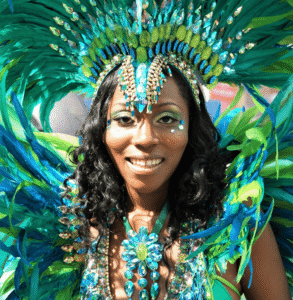
Get Ready for Miami Carnival 2025!
Sunshine, soca, and sweet bacchanal — it’s time to plan for one of the biggest Caribbean carnivals outside the islands!
If you haven’t been to Miami Carnival, just know: this is not a drill.
TBA. The carnival is usually held in March.
The Binche Carnival is celebrated in the town of Binche, located in the Hainaut province of Belgium.
Binche Carnival is one of the most famous and traditional carnivals in the country, recognized by UNESCO as a Masterpiece of the Oral and Intangible Heritage of Humanity. The carnival is celebrated each year in the days leading up to Ash Wednesday, with the main events taking place on Shrove Sunday, Shrove Monday, and Mardi Gras (Fat Tuesday).
The historical roots of the Binche festival remain somewhat uncertain, though tradition suggests a connection to a parade organized by Mary of Hungary for her brother Charles Quint in 1549. Mary resided in a castle in the city center, remnants of which can still be observed near the Saint Ursmer Collegiate Church. During this initial parade, participants likely donned vibrant costumes that eventually evolved into the distinctive attire of the modern Gilles, who are central figures in the current carnival.
In any case, the Binche festival is closely intertwined with Catholic Easter observances. The Catholic tradition involves a 40-day period of fasting leading up to Easter, commencing on Ash Wednesday. The seven days preceding Ash Wednesday are known as “gras” or “shrove” in English, as individuals indulge a bit before the onset of Lent. Among these days, Tuesday holds particular significance.

Binche Carnival is not only a festive spectacle but also a cultural phenomenon that preserves and showcases the unique traditions and folklore of the region. The Gilles, with their symbolic costumes and dances, play a central role in creating a vibrant and unforgettable carnival experience.
Key features and elements of Binche Carnival include:
The Gille's Dance is a significant and traditional part of the carnival. The Gilles, with their wooden clogs, perform a unique dance characterized by rhythmic steps and intricate choreography. The dance is a symbol of joy and festivity.
Binche Carnival is characterized by colorful and lively processions featuring various groups, including the iconic Gilles. The parades wind through the streets of Binche, attracting locals and tourists alike.
The climax of Binche Carnival is on Mardi Gras (Fat Tuesday). On this day, the Gilles wear special hats adorned with ostrich feathers, and their faces are covered with wax masks. In the evening, a unique and enchanting event known as the "Gilles' Rondeau" takes place, where Gilles, in a circle, dances to the beat of drums.
Similar to other Belgian carnivals, Binche Carnival includes the tradition of throwing oranges. Gilles on the parade floats toss oranges to the crowd, creating an interactive and festive atmosphere.
The Gilles are the central figures of Binche Carnival. Dressed in vibrant and distinctive costumes, including wax masks with mustaches, feathered hats, and bright clothing, the Gilles represent the spirit of the carnival. Their attire is a symbol of the town's history and traditions.
Binche Carnival is deeply rooted in local traditions and is organized by various societies and groups. Each society has its unique costumes, rituals, and customs that contribute to the overall richness of the carnival. The carnival fosters a sense of unity and pride among the people of Binche.

Sunshine, soca, and sweet bacchanal — it’s time to plan for one of the biggest Caribbean carnivals outside the islands!
If you haven’t been to Miami Carnival, just know: this is not a drill.

So you finally catch the Carnival fever — the feathers, the fetes, the freedom! But then reality check: when you tally up flights, costume, lodging, and parties, that Carnival trip starts looking like a second rent payment (or worse).

When you hear “Carnival,” your mind might jump to sweet Trinidad but hear us out — the Vienna Carnival is bringing that same Caribbean heat right into Austria’s capital, and trust, it’s a whole new level of cultural mash-up!
